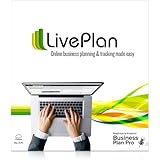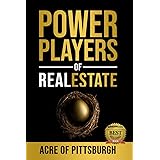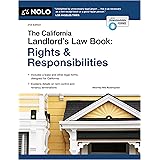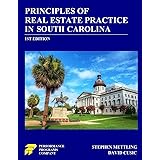The landscape of real estate investing has undergone significant transformations, particularly in the fix-and-flip sector. As highlighted in the accompanying video, the era of effortless profits experienced from 2020 through early 2022 has undoubtedly concluded. This period, characterized by properties routinely selling for substantial amounts over asking price—sometimes an additional $25,000 to $100,000—even with basic renovations, has been supplanted by a far more discerning market. Astute investors must now adapt to elevated interest rates, a surplus of available inventory, and the exit of less prepared operators from the industry.
Indeed, this market shift necessitates a strategic re-evaluation, particularly in how properties are designed and presented to potential buyers. The days when a simple “Home Depot flip,” featuring generic, low-end materials, guaranteed a rapid and profitable sale are long past. Today, success in 2025 fix & flip design trends hinges on making a property genuinely stand out, capturing buyer interest, and maximizing return on investment (ROI) through thoughtful, contemporary design choices. This requires a nuanced approach to aesthetic enhancements, ensuring they resonate with current market demands while remaining financially prudent.
Strategic Design for Enhanced Fix and Flip Profitability in 2025
Achieving distinction in a competitive housing market demands more than just basic cosmetic updates; it requires a sophisticated understanding of buyer preferences and market dynamics. Contemporary fix and flip strategies must integrate design as a core component of value creation, moving beyond the superficial to cultivate truly desirable living spaces. This foundational principle underpins the successful execution of any profitable real estate investment in the current climate.
Embracing Multi-functional Layouts and Smart Staging
The traditional open-floor plan, while still generally favored, is evolving to incorporate more adaptable, multi-functional spaces. Modern buyers, especially young professionals or small families, often seek versatility within a home, desiring areas that can serve multiple purposes throughout the day. For instance, a basement might transition seamlessly from a lounge area to a home office or a workout space, addressing diverse lifestyle needs within a smaller footprint.
In contrast to simply leaving areas undefined, tactical staging becomes paramount in smaller or unusually configured spaces. Real staging, as numerous industry statistics affirm, significantly accelerates sales velocity and often secures a higher selling price compared to virtual alternatives. Furnishing a challenging basement or a quirky nook helps potential buyers visualize its potential, translating abstract spaces into functional, appealing rooms. This strategic investment in professional staging can yield substantial returns, helping properties achieve their optimal market value.
Prioritizing Eco-Friendly and Durable Materials for Modern Living
The demand for sustainable living extends directly into home buying, with an increasing emphasis on eco-friendly and durable building materials. Investors can strategically integrate these elements to appeal to environmentally conscious buyers, without necessarily escalating project costs exorbitantly. The objective is to strike a balance between ecological responsibility and budgetary constraints, ensuring that upgrades offer tangible benefits and a strong narrative for real estate agents.
Consider the selection of luxury vinyl laminate (LVL) flooring, for example, which offers the aesthetic appeal of hardwood at a fraction of the cost, often just a 50-cent difference per square foot. Furthermore, opting for cork underlayment beneath LVL not only enhances sound absorption and durability but also offers a more eco-friendly alternative to plastic. This considered approach allows investors to check the “eco-friendly” box, providing value and appeal to a broad buyer demographic.
Location-Specific Eco-Conscious Choices
The degree to which eco-friendly features impact buyer decisions can vary significantly by location and price point. A high-end property in Boulder, for instance, targeting buyers who frequently drive electric vehicles and prioritize sustainability, will necessitate a more robust integration of green solutions. Here, a larger budget for certifications or premium eco-materials is often justified by the expected sales price, potentially exceeding $1.25 million, as demonstrated by local projects.
Conversely, a starter home or condo in a more price-sensitive market like Aurora might require a more selective application of eco-conscious upgrades. Investors should intelligently allocate resources, focusing on high-impact, cost-efficient choices that offer a clear return. This pragmatic approach ensures that eco-friendly investments align with buyer expectations and market realities.
High-Impact Eco-Friendly Flip Tips:
- Nest or Digital Thermostats: These devices offer both aesthetic appeal and programmable energy efficiency, significantly reducing utility costs for future homeowners.
- LED Can Lighting: A simple yet effective upgrade, LED lighting provides a clean, modern look, drastically cuts energy consumption, and often qualifies for energy rebates, like those from Excel Energy.
- High-Efficiency Furnaces: Upgrading from an 80% efficient furnace to a 94-96% efficient model, despite an initial investment of $1,000-$2,000, offers substantial energy savings and a compelling listing feature. Securing rebates directly, rather than through contractors, maximizes this benefit.
Seamless Indoor-Outdoor Living Integration
Especially in regions like Colorado, renowned for its distinct four seasons, the harmonious connection between indoor and outdoor living spaces is a powerful design trend. Creating a cohesive flow between a home’s interior and its backyard oasis significantly enhances perceived value and buyer appeal. This integration allows for a seamless transition from interior comfort to exterior leisure, catering to a lifestyle focused on enjoyment and entertainment.
Consider a ranch-style property where a modest $5,000 investment in a concrete patio, integrated planters, a pergola, and thoughtful landscaping can yield a substantial ROI, often doubling the initial outlay to an estimated $10,000+ in added value. This approach extends the concept of “curb appeal” to the rear of the property, transforming a mere backyard into a memorable living extension. Strategic window placement further enhances this connection, providing unimpeded views that amplify the sense of an expansive, integrated living environment.
The 2025 Fixture and Finish Package: Selling the Sizzle
While the structural integrity of a house forms its fundamental “steak,” the “sizzle”—the fixture and finish package—is what truly captivates buyers and differentiates a property in the market. These aesthetic details, including paint colors, tile selections, faucets, and light fixtures, typically represent a modest investment of $2,500 to $5,000 in a rehab budget, yet they profoundly influence a home’s appeal and saleability.
Kitchen: The Heart of Fix and Flip ROI
The kitchen remains the paramount area for maximizing ROI within the fixture and finish package. For buyers, the prospect of undertaking a kitchen renovation post-purchase can be daunting and costly, often double what an investor can achieve through bulk purchasing and established contractor relationships. Therefore, presenting a beautifully updated kitchen can be a decisive factor in securing a quick and profitable sale.
Current trends favor two-tone cabinetry in natural, neutral, and earth tones. For example, pairing deep navy lower cabinets with “Sand”-colored upper cabinets evokes a boutique hotel or upscale restaurant aesthetic, offering sophistication and visual interest. Integrating premium countertops like marble or quartz, alongside carefully chosen backsplashes, further enhances the kitchen’s appeal. Making final backsplash decisions on-site, under varying light conditions, ensures optimal coordination and visual impact, making the kitchen a memorable focal point for buyers.
Curated Color Schemes: Moving Beyond Monochromatic Grays
The pervasive gray color palette, while once a safe choice, now risks appearing cold and dated. The market is increasingly drawn to warmer, more organic tones, including soft greens and sophisticated earth hues. Leveraging resources like Sherwin-Williams’ extensive color wheel, investors can strategically introduce palettes that feel fresh and inviting, differentiating their properties from the sea of generic flips.
Distinctive Color Palettes for 2025:
- “Cascades” (Sherwin-Williams): A beautiful green with blue undertones, ideal for front doors to create a vibrant first impression and as an accent wall color to carry the theme indoors.
- “Snowbound” (Sherwin-Williams): The “new white,” a softer, slightly creamy hue for exteriors, providing warmth without the starkness of pure white. It contrasts beautifully with darker accents, moving away from cool grays.
- “Iron Ore” (Sherwin-Williams): Positioned as the “new black,” this color features a unique golden undertone, appearing subtly different under various lighting conditions. It offers a sophisticated, bronze-like black for impactful accents.
- “Laurel Woods” (Sherwin-Williams): A chic sage green that can be used effectively on front doors, accent walls, and even painted on interior doors and their casings. This unconventional choice creates a memorable design statement that helps properties stand out in a competitive market.
Accent Walls and Strategic Design Elements
Accent walls continue to provide opportunities for creative differentiation in smaller spaces like offices, breakfast nooks, or basement bedrooms. Moving beyond traditional vertical shiplap, incorporating a chevron pattern adds a contemporary, arrow-like or half-diamond visual interest. These subtle yet impactful design nuances elevate the interior aesthetic and resonate with modern design sensibilities.
Understanding the buyer demographic, particularly the significant influence of women in home purchasing decisions, is crucial for effective design. By offering curated selections and systematized design processes, such as the Elevation spreadsheet with seven pre-selected styles and multiple options for fixtures, faucets, and tiles, investors can streamline decision-making. This approach allows for efficient online shopping from vendors like Amazon, Wayfair, Overstock, and Floor and Decor, enabling contractors to receive materials directly and investors to accumulate credit card points, optimizing both time and resources.
This systematic approach ensures that every design choice, from paint colors to appliance selections, contributes to a cohesive, appealing aesthetic, enabling investors to create a distinctive product that truly stands out in the 2025 fix & flip market. For those looking to delve deeper into these strategies, opportunities like the Elevation Academy and Fix and Flip Live events offer invaluable, hands-on training and insights.









